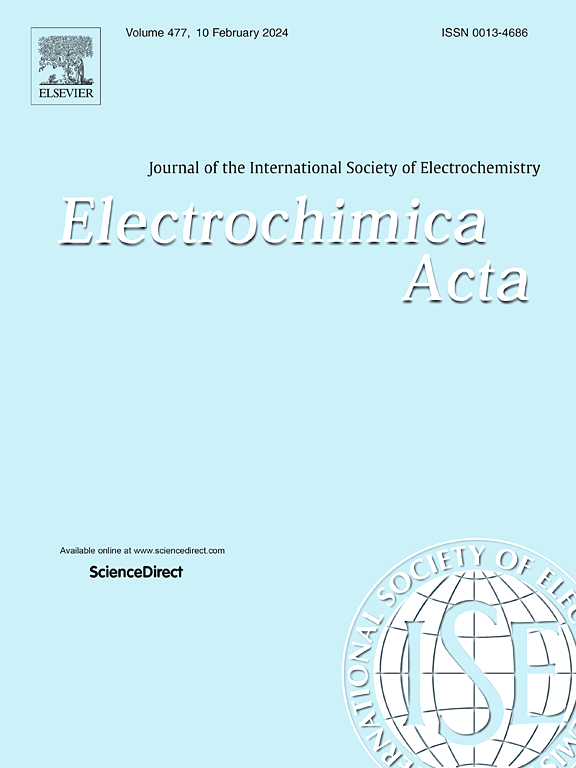Zinc metal free polymer-based anode materials for ultralong aqueous zinc-ion rechargeable battery
IF 5.5
3区 材料科学
Q1 ELECTROCHEMISTRY
引用次数: 0
Abstract
Aqueous Zn-ion batteries (AZIBs) have garnered significant attention for grid-level energy storage systems owing to their high safety, cost-effectiveness and environmental friendliness. However, the practical application of the AZIBs always suffers from uncontrollable Zn dendrite growth, low coulombic efficiency and the irreversible kinetics of electrodes. Herein, we propose a highly zincophilic organic polyimide-decorated graphene (PI/G) anode synthesized through straightforward polycondensation reactions featuring an optimized electronic structure with a π-conjugated network. The well-organized, high-density diimide groups in PI/G material offer more accessible electrochemically active sites and reduce the energy barrier for ion diffusion as supported by electrochemical, ex-situ characterizations and density functional theory (DFT) simulations. The synthesized PI/G anode provides a low redox potential, high specific capacity and fast rate capability. When a full AZIB is fabricated by the pairing of polymer anode with ZnMn2O4 cathode, the resulting dendrite-free device provides a remarkable specific capacity and ultra-long cycle stability, retaining 84 % of its capacity at 10 A g−1 even after 50,000 cycles. This stability is achieved through a reversible Zn2+ co-participative phase transfer mechanism at redox-active sites. This study hopes to pave the way for an alternative design and development strategy for practical AZIB applications in large-scale grid energy storage systems.
超长水锌离子可充电电池用无锌金属聚合物基负极材料
水性锌离子电池(azib)由于其高安全性、高性价比和环境友好性,在电网级储能系统中受到了广泛关注。然而,AZIBs在实际应用中存在Zn枝晶生长不可控、库仑效率低、电极动力学不可逆等问题。在此,我们提出了一种高度亲锌的有机聚酰亚胺修饰石墨烯(PI/G)阳极,通过直接缩聚反应合成,具有优化的电子结构和π共轭网络。在PI/G材料中,组织良好、高密度的二亚胺基团提供了更容易接近的电化学活性位点,并降低了离子扩散的能量垒,这得到了电化学、非原位表征和密度泛函数理论(DFT)模拟的支持。合成的PI/G阳极具有氧化还原电位低、比容量高、速率快的特点。当聚合物阳极与ZnMn2O4阴极配对制备完整的AZIB时,所得到的无枝晶器件提供了显着的比容量和超长循环稳定性,即使在10 a g−1下经过50,000次循环也能保持84%的容量。这种稳定性是通过氧化还原活性位点可逆的Zn2+共参与相转移机制实现的。本研究希望为大规模电网储能系统中实际AZIB应用的替代设计和开发策略铺平道路。
本文章由计算机程序翻译,如有差异,请以英文原文为准。
求助全文
约1分钟内获得全文
求助全文
来源期刊

Electrochimica Acta
工程技术-电化学
CiteScore
11.30
自引率
6.10%
发文量
1634
审稿时长
41 days
期刊介绍:
Electrochimica Acta is an international journal. It is intended for the publication of both original work and reviews in the field of electrochemistry. Electrochemistry should be interpreted to mean any of the research fields covered by the Divisions of the International Society of Electrochemistry listed below, as well as emerging scientific domains covered by ISE New Topics Committee.
 求助内容:
求助内容: 应助结果提醒方式:
应助结果提醒方式:


